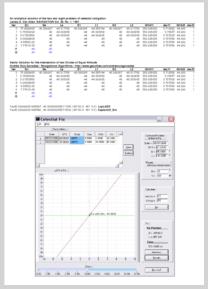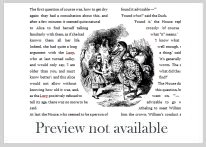
NavList:
A Community Devoted to the Preservation and Practice of Celestial Navigation and Other Methods of Traditional Wayfinding
From: Andrés Ruiz
Date: 2008 Apr 8, 15:28 +0200
Dear George,
Yes, my paper: "Vector Solution for the intersection of two Circles of Equal Altitude", (not equal amplitude) is in The Journal of Navigation, 2008 Volume 61, Issue 02 April 2008, pp 355-365. http://journals.cambridge.org/action/displayJournal?jid=NAV
The Abstract and the appendix not published, (There is always an intense competition for space in the Journal and, the RIN ask me to save space), is at my web site, in the [Papers] section.
I think there is no omission, the Running Fix algorithm is based on: “Metcalf, T. R. Advancing Celestial Circles of Position, NAVIGATION, Vol. 38, No. 3, Fall 1991, pp 285-288.”
And the appendix is clear enough after reading Metcalf´s paper. It based on iterating until the error in position between two consecutive solutions is less than 10-6, this is the key.
First thing I did when late in 2006, you kindly sent me your paper, was to check my running fix algorithm against your test. I have attached the results, also the solution by the NA SR algorithm and by Kaplan. The program CelestialFix.exe is available at the download section, and includes the vector solution for 2 CoPs.
Although the central issue of my paper is to present a vector solution to the two body fix problem, I have also treated the running fix problem, but this is a generalization, you can use any solution for the intersection, like Van Allen´s and the final result is the same.
For me the best way to solve a running fix problem, is using Kaplan paper, (Kaplan, G. H. 1995: "Determining the Position and Motion of a Vessel from Celestial Observations", Navigation, Vol. 42, No. 4, pp. 631-648.), including the motion as a part of the problem. It is the natural way for many problems in engineering.
http://www.geocities.com/andresruizgonzalez/pdf/Position_MotionKaplanBm.gif
Yours sincerely,
Andrés Ruiz
Navigational Algorithms
http://www.geocities.com/andresruizgonzalez
-----Mensaje original-----
De: NavList@fer3.com [mailto:NavList@fer3.com] En nombre de George
Huxtable
Enviado el: martes, 08 de abril de 2008 0:31
Para: NavList@fer3.com
Asunto: [NavList 4815] Re: Your paper in JoN.
In Navlist 4812 I posted the following message. I didn't intend to; it was
the result of a bit of finger-trouble, as my intention was to send it
off-list directly to Andres Ruiz. . However, no harm done.
But I didn't explain the topic that Andres was writing about, in his paper
in the latest issue of Journal of Navigation, so this message is to fill in
that omission. It was "Vector solution for the intersection of two circles
of equal amplitude", by Andes Ruiz Gonzalez.
And the bit I was referring to was his section 2.3, "Correction for the
motion of the observer", which stated-
"When the two sights are not taken at the same time, it is necessary to move
the first CoP [circle of position] to the time of the second one, or both to
a common instant.Many methods have been presented, but the correct way to
move a CoP is to advance or retire the GP [Geographical Position of the
first observed body] due to the motion of the observer [refs 6,7]
Using the technique described in reference [6], the correction is a function
of the estimated position of the observer (Be,Le), and his motion: course
and speed [C.S]. And since what we are looking for is the true position, an
iterative process is required in order to reach the solution for the running
fix. The algorithm is described in the Appendix."
The appendix gives a block diagram of the decision boxes rather than a
description.
I have little doubt that Andres understands well how to tackle this
question, and get the right answer, as he has explained it to us on Navlist.
What I am questioning is his use of the term CoP, or circle of position, to
describe the non-circle of the transferred locus of position. Presumably the
program calculates the intersection of the second circle with that
non-circle, or else with a different circle, which has its centre displaced
further, so that it's tangential to the locus in the region that matters.
This is what I wrote earlier-
=====================
Dear Andres,
Pleased to see your paper in Jounal of Navigation.
Coming from an earlier generation, I didn't really take in vector
mathematics as applied to such problems. So much of your paper went over my
head.
What I want to ask about are your words in 2.3 about correcting for the
motion of an observer.
An observer who has measured the altitude of a star to be, say 30 deg, knows
that his locus is on a circle radius 60 deg centred at the GP of the star,
(say, at dec = 0, GHA = 0, as in the example in paragraph 4 of my paper in
JoN, 59, No3, pages 521-524, which I think you have). And then the observer
moves a known distance, say 60 miles North. His new locus is a closed
figure, somewhat egg-shaped, but NOT a circle any longer. Does your
algorithm in A2 find the crossings of that non-circle with another circle
centred on another star (say, at dec = 1deg N, GHA = 45 deg W, seen at 45
deg alt, as in that example).? What result does it give?
Yours, George.
contact George Huxtable at george@huxtable.u-net.com
or at +44 1865 820222 (from UK, 01865 820222)
or at 1 Sandy Lane, Southmoor, Abingdon, Oxon OX13 5HX, UK.
--~--~---------~--~----~------------~-------~--~----~
Navigation List archive: www.fer3.com/arc
To post, email NavList@fer3.com
To , email NavList-@fer3.com
-~----------~----~----~----~------~----~------~--~---








